

Family finds peace in Tennessee




Family finds peace in Tennessee

NTCA members are committed to protecting you
Everyone should take cybersecurity seriously, managing passwords and being aware of all the possible threats to your personal information, finances and more. That’s not meant to frighten you, because you do have help. NTCA member providers across the nation take your security as seriously as you do, and they work daily to secure the networks bringing you the critical internet-based services you need. Recently, I had the opportunity to share more about NTCA’s cybersecurity efforts for both consumers and broadband providers, including CyberShare: The Small Broadband Provider ISAC, through a meeting with U.S. Cybersecurity and Infrastructure Security Agency Director Jen Easterly.
CISA recently launched the Secure Our World program to raise awareness about cybersecurity best practices and empower the public to take proactive steps to protect themselves online. Resources available to the public include a public service announcement, tip sheets on topics like phishing, multifactor authentication and the importance of creating strong passwords and updating software. And there is even a bingo board to make this critical topic engaging for the youngest internet users.
Also, Cybersecurity Awareness Month each October highlights these important issues and emphasizes that you’re also part of the team helping keep us all safe. While NTCA members work behind the scenes, you can help by recognizing phishing attempts, choosing strong passwords and more. Visit cisa.gov/secure-ourworld for more.
Together, we’ll help keep everyone safe and secure online.
From work and school to games and streaming entertainment services, access relies on passwords. The U.S. Cybersecurity and Infrastructure Security Agency suggests you consider using a reliable tool to manage these key bits of information — password managers.
Memorizing complex passwords for multiple accounts is difficult, or impossible. So, sometimes passwords are too simple and easily hacked. Password managers, though, can help.
A password manager is a software tool that organizes all your passwords. Then, a single master code unlocks this vault — encouraging use of long, complex passwords.
Web browsers, including Safari, Chrome and Edge, have built-in password managers, and these can be accessed across devices like computers and phones. These may suffice for those with only basic needs, but they are limited. For instance, passwords in Apple’s Safari aren’t accessible on an Android phone running Google Chrome.
For more robust options, there is software like LastPass, 1Password and Bitwarden. These work across multiple types of devices and have additional features, such as the ability to generate passwords and integration into your favorite web browser.
Make your master password long, reliable and unique. Sixteen characters is recommended. Also, regularly review your stored passwords to remove passwords for accounts you no longer use.

Readers today can find themselves facing a technological conundrum. While many book lovers treasure traditional books, electronic devices, designed to make reading more comfortable and accessible, are hard to ignore.
For some, there’s nothing like the sensation of holding a book and feeling the paper as the pages turn. Printed books will always have emotional, if not monetary, value as collectibles. And they certainly aren’t going anywhere.
These days there are countless options of things to download and read on our phones and tablets, but dedicated, handheld electronic book readers, often called e-readers, offer text and lighting customizations and many other conveniences to enhance the reading experience. Nonreflective, electronic-ink displays give them a paper-like look and make it easier to read outdoors compared with reading on a phone or tablet. And, dedicated e-readers present fewer distractions — you won’t be interrupted by notifications, calls or texts.
Over the past few years, the price of e-readers has fallen while the hardware has improved. High-end features, such as backlit, high-resolution screens and waterproofing, are standard. If you don’t have an e-book reader, there’s never been a better time to invest in one.
• Portability: E-readers are lightweight and can store thousands of books.
• Customization: Most allow you to adjust the font and size, background
lighting, etc. They can make reading accessible for individuals with visual impairment by providing text-to-speech and other customizations.
• Searchability: E-readers’ built-in search functions mean you can easily find a favorite quote or passage in the book.
• Built-in resources: Dictionaries and thesauruses allow for immediate definitions.
• Environmentally friendly and affordable: No trees are harmed in e-book production, and they usually cost much less than traditional books.
Amazon Kindle is synonymous with e-reader for good reason. According to both Wired magazine and The New York Times’ Wirecutter, the Kindle is the most affordable, best and easiest choice for reading electronic books.
• Amazon Kindle: With a 6-inch screen and a high pixel density for sharper text, the least expensive Kindle — around $100 on Amazon — offers just about all the advantages of the more expensive e-readers. If you’re planning on reading outdoors this summer, it’s worth the extra charge, roughly $50, to upgrade to the waterproof Kindle Paperwhite with its better lighting options.
• Rakuten Kobo: Japanese retailer Rakuten currently offers six Kindlecomparable e-readers ranging from $110 to $400. The Libra 2 has a physical page-turn button and Bluetooth
support, so you can connect headphones and listen to audiobooks.
• Barnes & Noble Nook: The book retailer’s e-reader features a touch screen and page-turning button, as well as the ability to annotate and highlight text. The devices start around $100. As an added perk, Nook owners can read the complete contents of any book for free while in stores for one hour per day.
Once you’ve settled on an e-reader, where do you find the books? Amazon, Barnes & Noble and Kobo all sell tomes to download to their specific e-readers. But you could read for years without having to spend another dime. Sources of free e-books include:
• OverDrive.com, used by 43,000 libraries and schools worldwide, allows anyone with a library card to pull e-books, magazines and audio books.
• Project Gutenberg, a library of more than 70,000 free e-books to download or read online. Thousands of volunteers digitize and proofread the books available at gutenberg.org.
• Mybookcave.com
• Planetebook.com
• ManyBooks.net
• OpenLibrary.org
• GetFreeEbooks.com
We’re in the dog days of summer. Did you know that phrase dates back to the Romans? When I hear it, I always think about long, hot days perfect for a dip in a creek or pool, or a family gathering beneath a shade tree. It’s a time of year bookended by two of my favorite holidays — the Fourth of July and Labor Day.
 JOHNNY MCCLANAHAN President/CEO
JOHNNY MCCLANAHAN President/CEO
One of the many things I enjoy about my role with NCTC is seeing all the ways our community comes together. We’re more than a communications company. We not only want to provide you industry-leading services — like internet as fast as the summer is hot — but we also have a deep, lasting commitment to helping this place we call home thrive.
There’s no better time than summer to experience the energy, bustle and cherished traditions that make being outdoors so enjoyable. From the Fourth of July with fireworks that light up the night sky to Labor Day and its laid-back barbecues, these holidays are benchmarks in the rhythm of the year. But they go beyond the festivities and events. They carry a deeper significance, a reminder of the values we hold dear and the ties that unite us.
For us, the Fourth of July isn’t just about celebrating independence. It’s about coming together as a community to honor our shared heritage and celebrate our freedoms. Whether it’s a backyard cookout, a neighborhood party or a church potluck, these traditions are uniquely our own. We see family and friends often enjoying the same events and places as our parents, grandparents and even older generations. Throughout it all, we also remember those men and women who served our nation, because we would not be where we are as a community or nation without their service and sacrifice.
And then there’s Labor Day, a time to pause and reflect on the hard work and dedication that built our community and the nation’s economy. Workers play vital roles in our past, present and future, and we’re proud our services make much of this work possible. Often the economies of rural places like ours are dismissed, but we see the work and commitment that make the businesses in our region possible. These efforts are worth celebrating every day.
But perhaps what’s most remarkable about these holidays — really this entire summer season — are the connections we make along the way. In a world that often feels increasingly disconnected, the traditions tie us not only to this place but also to each other, and we’re all the better for it.
At NCTC, we’re acutely aware of the role we play in fostering this sense of community. It’s a responsibility we welcome, whether that means providing access to high-speed internet, supporting our schools, sponsoring a game or any other service we can provide. Together, we make this place all that it is, and I look forward to seeing you out and about during the dog days and beyond.
JULY/AUGUST 2024
The North Central Connection is a bimonthly newsletter published by NCTC, © 2024. It is distributed without charge to all member/ owners of the cooperative.

North Central is a member-owned corporation dedicated to delivering advanced telecommunications technology to the people of Northern Middle Tennessee and Southern Kentucky, including Macon County, Tennessee, Allen County and Warren County, Kentucky. NCTC also serves portions of Sumner, Trousdale, Smith and Clay counties in Tennessee.
North Central
872 Highway 52 Bypass East P.O. Box 70 Lafayette, TN 37083 Telephone: 615-666-2151 www.nctc.com
BOARD OF DIRECTORS
Glen Hardcastle
Chairman of the Board
Scottsville Exchange West
Randy Harston
Vice Chairman of the Board
Scottsville Exchange East
Calvin Graves
Secretary of the Board
Bethpage/Oak Grove Exchanges
Martha Bowser
Westmoreland Exchange
Kevin Dickerson
Defeated/Pleasant Shade Exchanges
Donnie Steen
Lafayette Exchange East
Jeff Flippin
Lafayette Exchange West
Chad Evitts
Hillsdale/Green Grove Exchanges
Chad Owens
Red Boiling Springs Exchange
Johnny McClanahan
President/CEO
Guy Holliman
General Counsel
Produced for North Central by:
On the Cover:

and Lori Jane
left Southern California for Lafayette in 2020, and it’s made all the difference. See story Page 8.

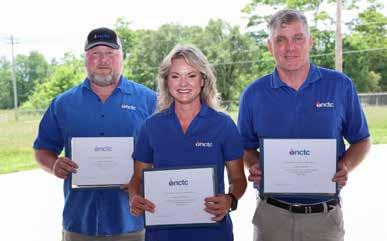
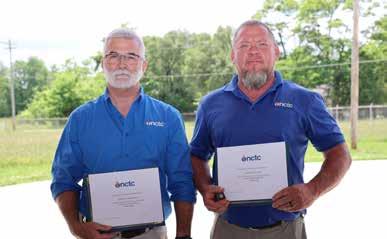

20 years

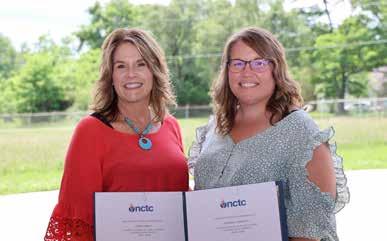

Wishing you a fun and safe Independence Day! In observance of the holiday, NCTC’s offices will close Thursday, July 4. Our help desk is available 24 hours a day, seven days a week. Call 270-622-2056 for assistance. You can also find out more information at nctc.com.



 Story by KATHY DENES
Story by KATHY DENES
Summer typically means travel time, whether scenic road trips or flights to vacation destinations. And more than ever before, beloved pets are tagging along for the ride.
Pet-friendly travel is a hot topic. It’s addressed by top vacation resources like Conde Naste Traveler, which has an online list of nationwide hotels and Airbnbs it deems best for accommodating pets, especially dogs. On travelandleisure.com, search “pets,” and you’ll unleash a wealth of helpful articles.
Even financial companies are weighing in.
NerdWallet compiled a list of Best Hotels for Pets in 2024, based on factors like fees and amenities, and rated air travel options, topped by Alaska Airlines. But if you don’t want to do the research yourself, there are travel agencies that specialize in planning and taking care of the details for you.
Hotels, resorts, parks and campgrounds usually post their pet policies, fees and amenities, as do airlines, trains and even cruise lines that allow passengers with paws. There are also numerous websites focused entirely on petfriendly travel, across the nation and around the world. Just browse by city, state or destination at resources such as:
• bringfido.com
• petswelcome.com
• tripswithpets.com





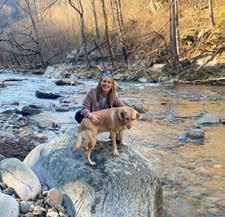




“Before deciding to bring your pet along on a trip, you need to ask yourself whether or not it’s in your pet’s best interest to do so,” says Dr. Rena Carlson, president of the American Veterinary Medical Association.
What’s a fun adventure for us might be overwhelming for our pets. “If you choose to include your pet, a pre-trip veterinary visit is a good idea, to make sure your pet is healthy and up to date on vaccinations and microchip registration, and to obtain a health certificate, which is required by law if you’re traveling to a different state with your pet,” Carlson says.
Your veterinarian can also provide vital information about the risk of parasites and other diseases that your pet may be exposed to at your destination, as well as possible preventive steps or treatments.
“Make sure to plan for their comfort in transit, whether by land or air, with regular breaks and by choosing the least stressful travel options,” Carlson says. “Confirm in advance that your destinations are pet-friendly, and try to maintain your pet’s routine as much as possible to help them feel secure. Your careful planning can ensure a safe and enjoyable trip for everyone involved.” For more great tips for traveling with your pet, check out: pettravel.com petfriendlytravel.com avma.org
Whether taking your pooch along for a carriage ride in Charleston — child’s ticket required if Fido won’t fit in your lap — or entrusting it to doggie day care at Dollywood while you ride the Mystery Mine, the Southeast is loaded with places that welcome four-legged travel buddies.
Here are a few destinations that receive high marks from people traveling with their pets:
• Little River Canyon National Preserve atop Lookout Mountain in North Alabama welcomes dogs parkwide, but they must be leashed.
• Chattanooga has inviting options, from downtown patio dining and parks to mountain trails and attractions.
• Dinosaur World in Cave City extends a Kentucky welcome to leashed dogs and provides water stations.
• Barkwells, gated retreats in Asheville and Brevard, North Carolina, have dog-centric cabin and cottage rentals, each with a fenced yard and a range of amenities to make it a haven for both pets and people.
• For South Carolina excursions, check sciway.net’s pet travel guide for info on rentals, parks, beaches, eateries and more.

• St. Augustine, Florida, gets a nod from AAA for pet-friendly options, like strolls, visits to popular attractions and perhaps a stay at the historic Bayfront Marin House.

When Lori Jane and William
“Bill” Wallace moved to Tennessee from Southern California, it didn’t take long to learn their new hometown was pronounced “LuhFAY-it” instead of the French-sounding “Lah-fah-yet.”
“We had to pick it up pretty fast, because you will get corrected,” Lori Jane says with a laugh.
In all fairness to them, Lafayette wasn’t on the couple’s radar when they decided to retire to Tennessee. Lori Jane, who retired from San Diego Superior Court, and Bill, a retired police officer, had initially planned to move to Cookeville. Like hundreds of thousands of other Californians in recent years, they chose to
leave because of the high cost of living, traffic and crime.
The Wallaces wanted a midsize city to settle in after living in a small town in northern San Diego County. With that in mind, they thought Cookeville might be perfect. It was big enough for some decent shopping, but small enough to not feel overwhelming.
But by the time they stepped off the plane in Tennessee, half the homes on their list were already under contract. With their hopes dashed, Lori Jane got on the computer and quickly learned about a place called Lafayette. “We were kind of scrambling, so we prayed about it. I said,
‘OK, Lord, if this is the plan and you want us to move to Tennessee, then we need some help.’”
Within minutes of walking into the second house on their new list of homes in Lafayette, Bill was in. The large, open floor plan and other parts of the home’s layout sold them on it.
They were also shocked to learn they could get fiber internet service through NCTC. “We didn’t have that back in California,” Lori Jane says. “So, it was a surprise to learn we could get it here. And when they started offering 2 Gigs here in Lafayette, I got it as soon as I could. We also got the mesh system through NCTC, Blast WiFi. It’s all been amazing and works so well.”
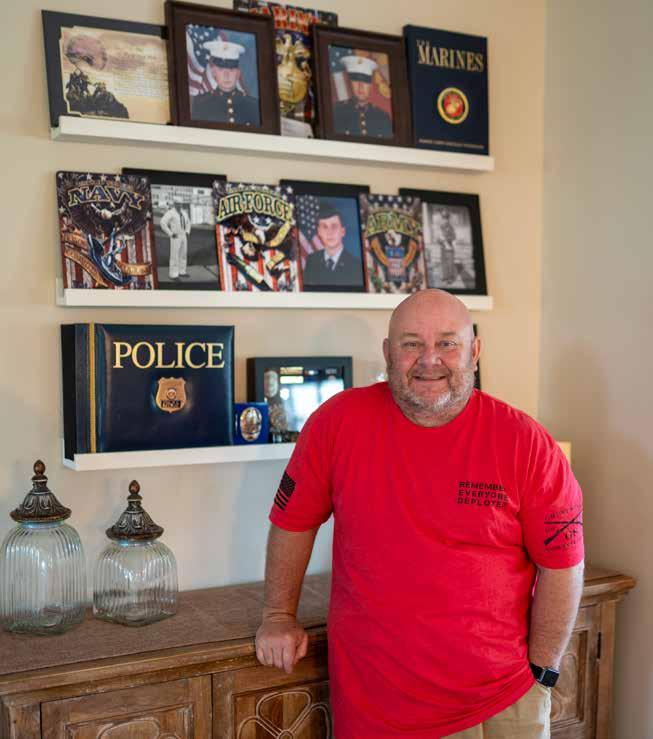
Soon after they bought the house, the couple packed their belongings and moved across the country. Bill was somewhat familiar with Tennessee, having spent parts of his young adulthood helping relatives in Stewart County with their tobacco crops. But it was all new to Lori Jane, and neither of them really knew what to expect. “But we told ourselves we were really going to try to enjoy where we lived,” Lori Jane says. “We really made an effort to meet people and get to know them and not be afraid or insecure.”
The Wallaces’ Christian-based, conservative values aligned with those of others in East Tennessee. “It always surprised me when I heard, ‘You don’t seem like Californians,’” Lori Jane says. “I didn’t know what they meant at first. They had this idea of what Californians were like, and we aren’t that.”
The first thing they did was make friends with the people whose home they
bought. They frequented locally owned restaurants, shops and auctions, and Lori Jane volunteers her excellent Mexican cooking skills for charity events. They also found a good place of worship and fellowship in Strong Tower Church.
“Joining the church pushed us into meeting people,” Bill says. “But we also have five grown children of our own, and we’ve always liked to support our community in that sense. We donate when local kids need it. We’re just there to show support for them.”
The couple’s five children range in age from 22 to 38. Three of them have already moved to Lafayette to be close to their parents. One is in Italy serving in the U.S. Air Force, while another lives in Austin, Texas, after recently getting out of the U.S. Marine Corps.
The Wallaces further integrated themselves into their new hometown through Lori Jane’s love of auctions, which they attend frequently. Bill, a prior service Marine with 26 years of policing under
LEFT: Bill Wallace served in the U.S. Marine Corps before starting a 26-year career in law enforcement. He now holds a position as one of Macon County’s judicial commissioners.
BELOW: Former Californians Bill and Lori Jane Wallace are enjoying their new home in Lafayette.

his belt, soon grew bored with retirement and was unanimously appointed by the Macon County Board of Commissioners to serve as one of the county’s two judicial commissioners.
Lori Jane and Bill love to talk about their Southern adventures, the people they’ve met and the ever-growing love they have for Macon County and the rest of Tennessee. They still can’t believe the kindness they’ve experienced.
“Nobody talks to anybody back in California,” Bill says. “Here, we do so many different things with so many people. We go to so many different places where they’re willing to take us. We haven’t found a bad place with rude people anywhere here.”
NCTC offers Multi-Gig packages in parts of its coverage region, and we’re working hard to make sure more locations can access NCTC’s superfast, Multi-Gig fiber internet service. To find out more, visit our website at nctc.com.
by Adrianna Sutton

Wearing a plaid shirt and a gray Froberg’s Farm cap, Tyler Froberg shares a cool fact about a favorite fruit with youthful viewers. “Every strawberry in the world is picked by hand,” he tells eager young minds. “And it takes half an hour to pick one row.”
Most fruit and vegetables are harvested by machines, which helps the fourth-generation farmer talk about farming as a STEAM — science, technology, engineering, arts and math — career option he promotes in a video for Lego’s education branch, known as Rebuilding the World with Agriculture.
Tyler has made a few videos for Lego, promoting schoolbased projects like building a strawberry-picking machine that won’t destroy the delicate fruit. But his screentime isn’t
limited to collaborations with Lego. As Farmer Froberg, Tyler has more than 780,000 social media followers learning about gardening, farming and life on a fruit and vegetable agritourism farm.
TEACHING THROUGH VIDEOS
When he first got out of the Army, Tyler worked on the family farm in Alvin, Texas. “I decided that I had my GI Bill, so I should probably go to college,” he says.
After earning a degree in agriculture, he worked for a year as an agriculture science teacher. “I loved it, and when you love something, you tend to be good at it, and when you tend to be good at it, you get recognition for it,” he says.
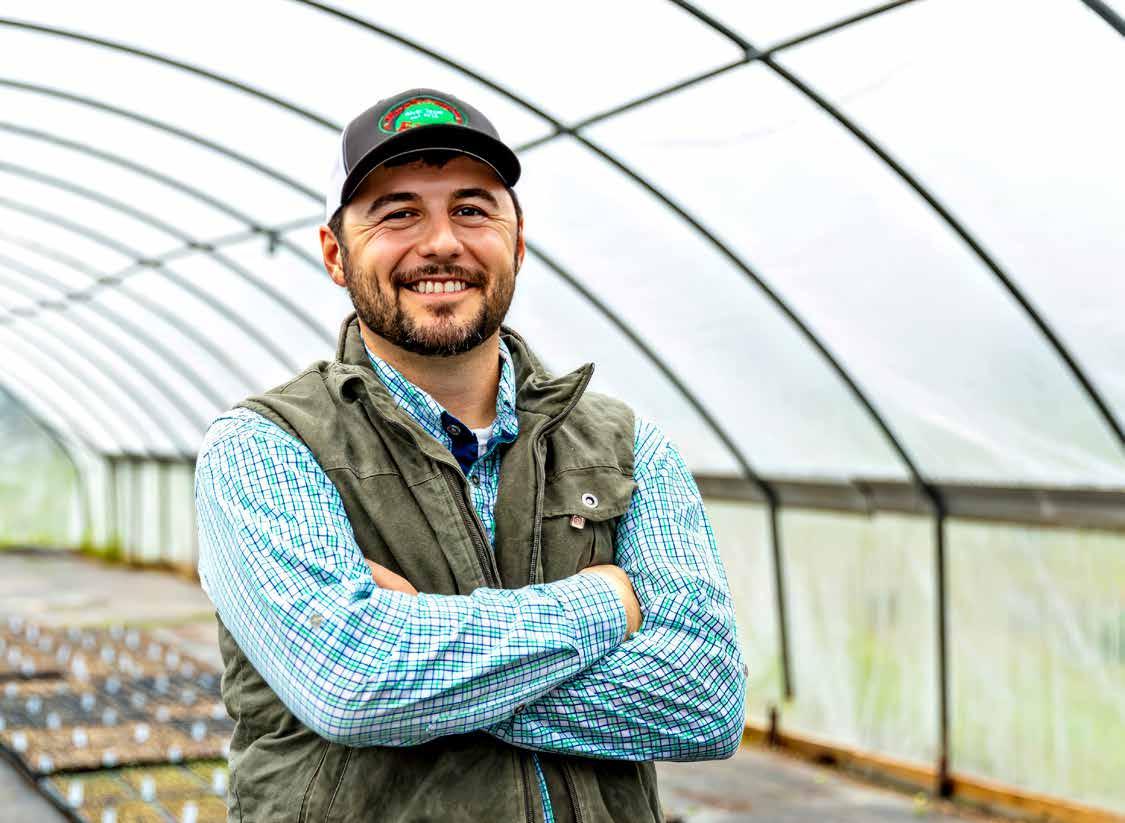
“I think I achieved something that I never thought I would through social media.”
— Tyler Froberg @farmer.froberg
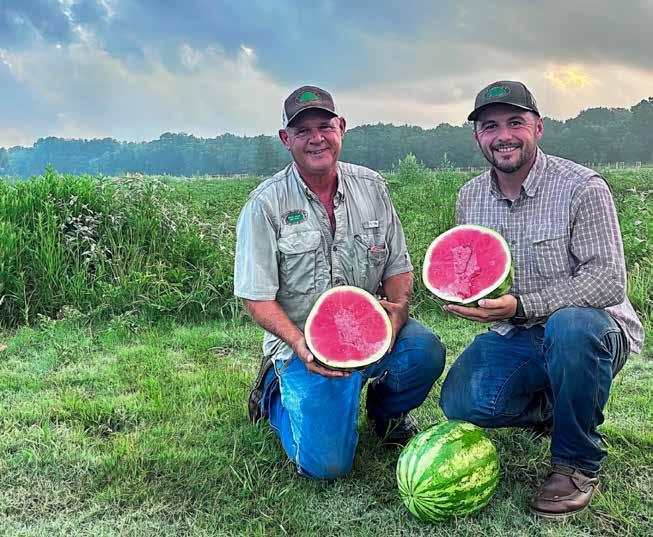
A nonprofit recognized Tyler as the person it needed to run a program teaching farm skills to fellow veterans. “When I was there, though, I missed the spark that you got with young people, whether it was seeing a seed germinate or seeing an animal being born,” he says. “While I was teaching adults, I didn’t see the same spark.”
Around that time, TikTok became popular, and Tyler got an idea. “I should make little videos, like ag lessons,” he says. “I’m still a teacher, and maybe that will scratch that itch. And so, I did.”
In the first two months, several of his videos got a respectable number of views. “I had a video hit 10,000 views, and then I had a video hit 250,000 views, and I was like, ‘Huh, there might be something to this.’”
Tyler has posted a few poems, tried growing square watermelons and loofahs, and succeeded in growing star-shaped zucchini. He’s even zipped layers of jackets to the tune of “Stand by Me” — which got over 5 million views the first time he posted it. But his favorite videos to make are any with his sons in them. “We just laugh and have fun,” he says, talking about “Little Frobergs” Dusty, Carson Lee and Tommy “Tomcat.”
“I’m not one of those content creator parents that are like, ‘No, no, no. You have to say that this way,’” he says. “It’s only been three years, and so, it’s still kind of new for us. They get excited to go out and film with me.” Tyler’s wife, Kristi, known on social media as “Momma Froberg,” also gets the occasional guest spot.
Tyler’s made plenty of silly videos. His personal favorite involves being a rubber duck farmer. “There were these rubber ducks everywhere, and it was just a lot of fun,” he says.
Despite his following on social media, Tyler doesn’t consider himself an influencer. “Influencers are putting on makeup trying to influence you to use this certain brand or product, or there are ag influencers who create content for people in the ag industry. They work with brands and influence followers to use certain brands or products, and I don’t feel like I do that.”
Tyler says there are a few stages every content creator goes through. The first step is embarrassment. “You don’t want anybody you know to know that you’re creating content,” he says.
LEFT: Tyler, right, and his uncle, Alfred Froberg, show off watermelons grown at Froberg’s Farm. BELOW: Tyler enjoys making social media videos with his sons, or, as he calls them online, “Little Farmer Frobergs.” Tyler and his son, Dustin, have fun sharing gardening lessons.
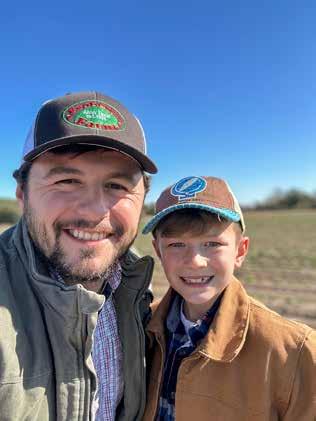
“Then comes, ‘So you’re still doing that thing?’” he says. “That’s when you see your mom and she’s like, ‘Oh, you’re still making the little videos. It’s so cute.’”
The third phase is thinking content creation is a waste of time. “You’re starting to take it more seriously,” he says, “but you’re not getting a lot out of it yet.”
Then there’s the final step — success. “For me, I got invited to give a commencement speech at a college graduation, and walking out on stage and realizing, ‘oh wait, I think I did it.’ I’m still not 100% sure, but I think I achieved something that I never thought I would through social media.”
What about those strawberry-picking machines?
“I would like to think that Lego went as far as they could with that and got hundreds of thousands of submissions for strawberry-picking machines, but I don’t know that to be true,” he says. But he planted the seed of an idea. Now it’s time to see what grows.
Tyler Froberg’s videos are available on Instagram and TikTok at farmer.froberg. His YouTube and Facebook accounts are under the name Farmer Froberg. For more on his family’s farm, go to frobergsfarm.com.

 Story by JEN CALHOUN
Story by JEN CALHOUN
Tim Booher can point to three important advancements that changed emergency medical service during his 30-plus years working in the field.
The first one happened in the 1990s, says Booher, senior program director of Air Evac Lifeteam, an air ambulance company with bases all over the country, including Lafayette. At some point during that decade, ambulances started carrying EKG equipment that could determine if a patient was having a heart attack.
The second innovation came a few years later, when technology allowed ambulance workers to transmit that same EKG information straight to a doctor at the hospital. This ensured patients got access to the right treatments more quickly than ever.
The third major shift in Booher’s career timeline came when air ambulance companies realized they could save more lives if they kept air ambulances in more rural areas. “That’s been the biggest gamechanger there is,” he says. “Because when that happened, it gave rural folks access to big-city health care.”

“ This medical crew is extremely experienced, and their goal is to be the best part of somebody’s worst day of their life.
— Tim Booher, Air Evac Lifeteam in Lafayette ”

“It’s a no-brainer, really,” says Booher, who likes to relay a story from when he was a paramedic in the 1990s. “I lived in a very rural part of Tennessee, and there was a horrific accident one Sunday afternoon. We called for a helicopter, which had to come all the way from Nashville. That cuts into the golden hour.”
When it comes to traumatic injury, the golden hour is the first 60 minutes after the injury. It is the time frame that most determines a patient’s outcome. If treated well, it can make a huge difference in health outcomes.
But high-level trauma centers with expertly trained personnel and cutting-edge equipment are almost always located in urban areas. And traveling by regular ambulance from rural areas to big cities can take hours.
Timing is especially crucial for stroke patients. “From the onset of symptoms, you’ve got about three or four hours to get them treated,” Booher says. “There’s some real cutting-edge medicine out there right now. Using air ambulances is a critical component of stroke survival.”
Booher likens Air Evac’s different helicopters to flying emergency rooms. In addition to highly trained medical personnel, the helicopters include ventilators, blood, blood products and more. They also offer radio systems and satellite phones and access to Air Evac’s medical directors.
The air ambulances can transport infants all the way up to elderly patients. Many of the flights are transfers from hospital to hospital. Some are specialty transports that involve a higher level
of care. “We move people at a moment’s notice,” he says.
Air Evac Lifeteam 19 in Lafayette services
Macon County and about five or six nearby counties. “We’re very community-oriented, and it’s a very rewarding job,” Booher says. “You can probably walk up to somebody on the street, and they’ll all know where the helicopter is at. We’re ingrained in the community.”
The base includes about five nurses, three paramedics and four helicopter pilots. In addition, a helicopter mechanic checks the aircraft daily and performs regular maintenance. On a typical flight, a crew consists of a pilot, a nurse and a paramedic. Tennessee and Kentucky also allow two nurses on the flight in place of a paramedic.
Air flight medical crew members are required to have worked for several years in high-call-volume emergency departments, intensive care units or EMS systems. They’re also required to obtain flight certifications for their respective fields.
“When a patient gets on one of these flights, they’re in very good hands,” Booher says. “This medical crew is extremely experienced, and their goal is to be the best part of somebody’s worst day of their life. They’re very compassionate, and they love what they do.”
The pilots are also highly experienced, and their jobs rely on NCTC’s cutting-edge fiber internet network to determine weather conditions and patterns, as well as flight plans. “I made sure we had NCTC service,” Booher says. “It’s the best, and that’s what we needed.”
Air Evac Lifeteam 19 in Lafayette is an air ambulance operation in Macon County. AEL, a Global Medical Response solution, is headquartered in O’Fallon, Missouri. It operates more than 150 helicopter air ambulance bases across 18 states. Crews are on duty seven days a week to respond to the scene of medical emergencies and to transport patients between medical facilities.
Air Evac Lifeteam is affiliated with AirMedCare Network, which covers all out-of-pocket air transport costs for its network members when transported by an AMCN provider. For more information on member benefits, visit lifeteam.net and click on “Membership.” Or call 615-688-3822 to speak with a local membership representative.

Among summer’s many charms are vegetables and fruit blooming with flavor, and it doesn’t take a lot of effort to turn them into delicious salads.
These recipes cover all the salad bases. From crisp leafy tossed salads to sturdy mixes that can sit out for a couple hours while the kids play in the yard and you visit with friends. Keep it easy and choose a makeahead recipe featuring hearty pastas, grains and beans that can work as a side dish or a full meal, or throw together fruit or vegetable combinations that hit sweet or savory notes.
Summer salads are versatile, so feel free to swap out lettuces, and use a variety of fruits instead of just one kind. After all, it’s summertime, and the living — and cooking –should be easy.

Food Editor Anne P. Braly is a native of Chattanooga, Tennessee.
1 pint fresh blueberries
2 peaches, diced (leaving the skin on adds texture, vitamins and color)
2 cucumbers, sliced 1/2 cup crumbled feta cheese
3 tablespoons fresh lemon juice
1 tablespoon Dijon mustard
1 tablespoon honey
1 tablespoon olive oil
1 tablespoon finely chopped basil Kosher salt and freshly ground black pepper, to taste
In a large serving bowl combine the blueberries, peaches, cucumbers and feta.
In a jar with a lid or measuring cup combine the lemon juice, Dijon, honey, olive oil, basil, salt and pepper. Whisk together until well combined.
Pour the vinaigrette over the salad and gently mix everything together. Taste for seasoning and garnish with extra basil. Serve or cover and refrigerate the salad until ready to serve.

3 cups corn kernels (approximately 4 ears)
1 cup cherry tomatoes, quartered
1 cup cucumbers, diced
1 cup crumbled feta cheese
1/4 cup red onion, diced
3 tablespoons olive oil
3 tablespoons rice vinegar
1 tablespoon fresh parsley
Fresh basil ribbons
Kosher salt and freshly ground pepper, to taste

Bring a large pot of salted water to a boil and add the corn. Cook for 3 to 4 minutes or until the kernels turn bright yellow. Drain the corn and cool completely. Use a sharp knife to remove the kernels from the corn cob, scraping the cobs to get all the “milk” from the cobs.
In a large bowl, combine the corn kernels, cherry tomatoes, cucumbers, feta cheese and red onion. Drizzle the olive oil and vinegar over the salad.
Season generously with salt and pepper, to taste, and toss well to combine. At this point, the salad may be made ahead. Just before serving, sprinkle with fresh herbs, and toss to combine.
Grilled chicken heightens the flavor of this salad.
2 (10-ounce) packages cheese tortellini, prepared according to package instructions
2 cups shredded chicken
1 cup halved cherry tomatoes
8 ounces fresh mozzarella pearls
1 cup roasted red bell peppers, chopped into 1/2 -inch pieces
1 cup basil pesto (store-bought or homemade)
1 1/2 tablespoons extra-virgin olive oil
Fresh basil ribbons, for garnish
In a large bowl, combine the tortellini, shredded chicken, cherry tomatoes, mozzarella, roasted peppers, pesto and olive oil. Cover and refrigerate. Can be prepared up to a day ahead. When ready to serve, top with fresh basil.
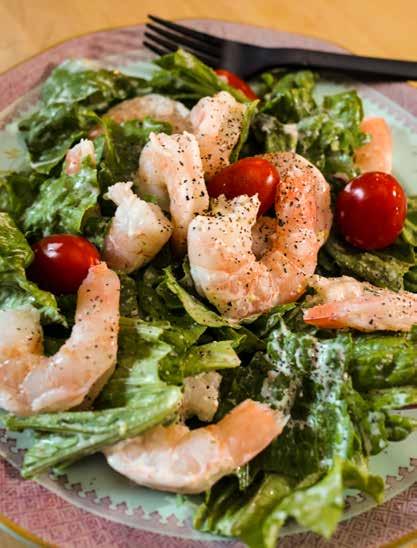
2 pounds shrimp, peeled and deveined
2 tablespoons finely chopped red onion
1 rib celery, finely chopped
Dressing:
1 cup mayonnaise
1 lemon, zested and juiced
2 tablespoons chopped fresh dill
1 tablespoon Dijon mustard
1 garlic clove, minced
1/4 teaspoon kosher salt
Pinch of freshly ground black pepper
Bring a pot of water to a boil. Add the shrimp and boil for 2 to 3 minutes, until cooked through and pink. Plunge the cooked shrimp in an ice water bath to cool. Meanwhile, make the dressing: Stir together the mayonnaise, lemon juice and zest, dill, mustard, garlic, salt and pepper. In a mixing bowl, stir together the cooled shrimp, red onion, celery and dressing, until creamy. Serve plain or nestled on butter lettuce leaves garnished with fronds of fresh dill, if desired.


